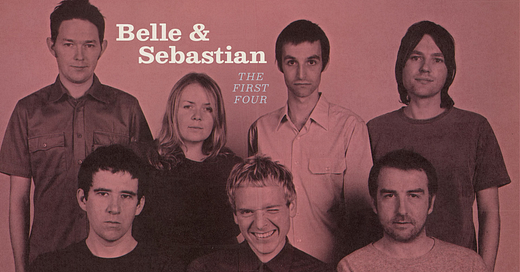Belle & Sebastian: The First Four
A detailed dive into the initial quartet of offerings from the Scottish ensemble that embodies the very essence of twee.
Stuart Murdoch was just hitting his first years of adulthood when he began to suffer from Myalgic encephalomyelitis, also known as chronic fatigue syndrome. For nearly seven years, Murdoch labored with the arduous symptoms of this neurological disease. Perennially exhausted, weak, and frail, he found himself unable to work or engage in extended physical activity, and too tired to invest in academic pursuits.
It was during this period of severe isolation and loneliness that Murdoch began to develop a belief that he could be a songwriter, “That was a big desert at the time, a kind of vacuum in my life. From that, these songs started coming out, these melodies where I could express what I was feeling.”
Gradually, Murdoch began feeling well enough to start crafting songs. In 1994, he enrolled in the Music Business course at nearby Stow College. Each year, the program at Stow would select one artist to record and then release a physical product via their Electric Honey label. Murdoch submit…
Keep reading with a 7-day free trial
Subscribe to What Am I Making to keep reading this post and get 7 days of free access to the full post archives.





